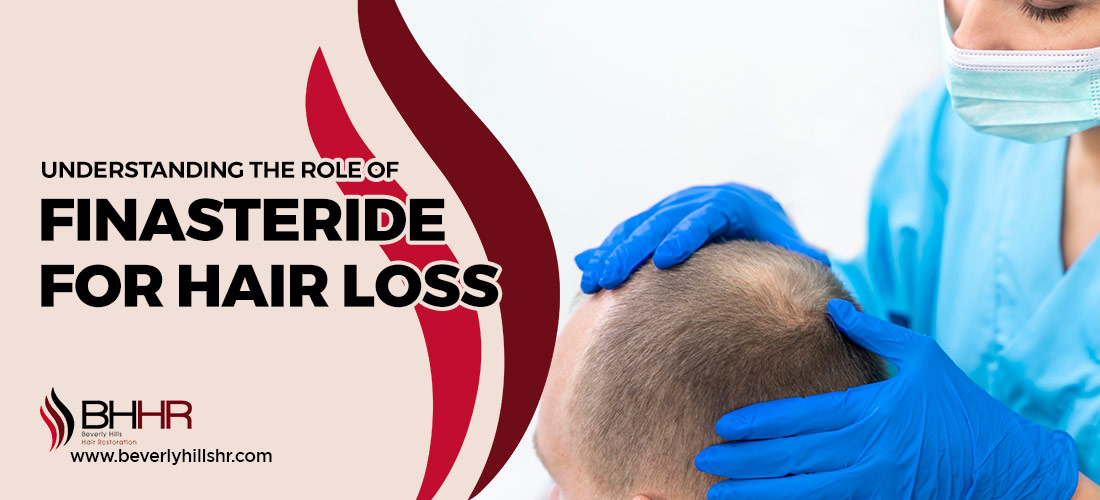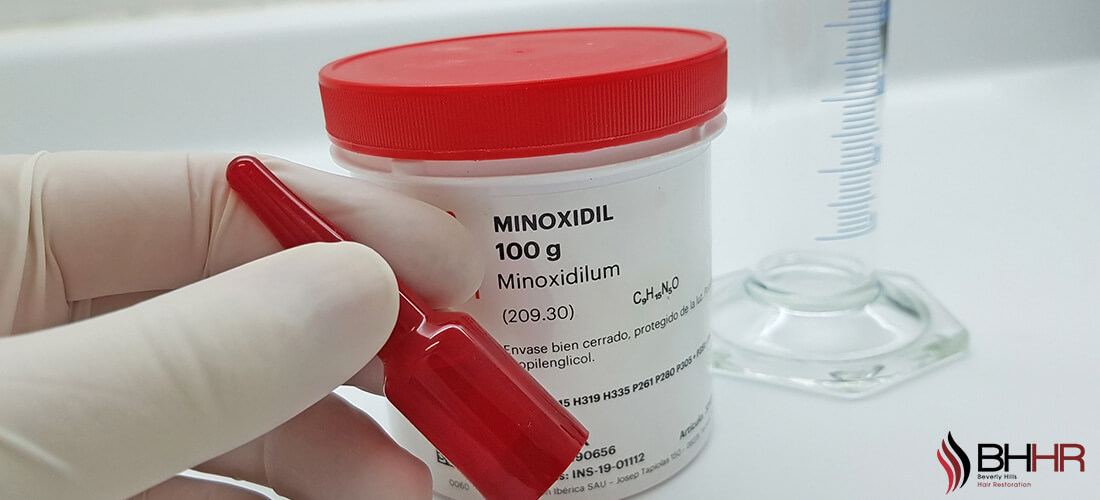Understanding the Role of Finasteride for Hair Loss
Home / Hair Transplant / Understanding the Role of Finasteride for Hair Loss
Updated On : August 13, 2024 | Category : Hair Transplant | Author: Beverly Hills Hair Restoration Team

Hair loss is a general issue affecting millions worldwide, often significantly impacting self-esteem and confidence. Finasteride has emerged as a leading solution among various treatments for hair loss. Initially invented to treat enlarged prostate glands, Finasteride has shown remarkable success in preventing hair loss and, in some cases, promoting regrowth. This blog provides an in-depth analysis of Finasteride's role in hair transplant, its benefits and considerations for use.
What is Finasteride?
Finasteride is a hair care product commonly used to treat hair loss, especially androgenetic alopecia or male pattern baldness. Our Smart Restoration brand provides Finasteride, an essential treatment option for individuals seeking to manage and reduce hair loss effectively. This medication is widely recognized for its ability to help maintain existing hair and promote hair regrowth, making it a popular and reliable choice for those seeking to manage hair thinning and baldness.
How Does Finasteride Work for Hair Loss?
Finasteride is effective for hair loss, particularly after a hair transplant. It works by inhibiting the enzyme 5-alpha-reductase, which converts testosterone into dihydrotestosterone (DHT)—high levels of DHT cause hair follicles to shrink, leading to hair thinning and loss. By reducing DHT levels, Finasteride helps maintain existing hair and supports the growth of newly transplanted follicles. This dual action prevents further hair loss and promotes denser and healthier hair, enhancing the success of hair transplant procedures. Regular use ensures long-lasting and improved results.
Why Does Dr. John Kahen Recommend Finasteride?
Dr. John Kahen recommends Finasteride for several compelling reasons:
- Ease of Use
- Promotion of Hair Regrowth.
- Long-Term Results
- FDA-Approved
- Minimal Side Effects
- Cost-Effective
- Improved Self-Confidence
- Combination Therapy
When Can I Start Using Finasteride?
Finasteride is commonly prescribed for treating hair loss. Timing is crucial for its effectiveness, particularly in hair transplant surgery.
-
Before Hair Transplant Surgery
You can start using Finasteride before your hair transplant surgery to stabilize hair loss and create a healthier scalp environment for the procedure. Dr. John Kahen often recommends beginning Finasteride treatment a few months before surgery. This preparation helps ensure existing hair is preserved and the scalp is in optimal condition for the transplant.
-
After Hair Transplant Surgery
Post-surgery, Dr. Kahen typically advises starting or resuming Finasteride treatment a few weeks after the procedure. This timing allows the scalp to heal initially without interference. Using Finasteride after your hair transplant helps maintain the health of the newly transplanted follicles and supports ongoing hair growth, enhancing the overall success and density of the transplant.
Always follow Dr. Kahen's guidelines and recommendations for the best possible results.
Potential Side Effects of Finasteride
While Finasteride offers numerous benefits for hair loss treatment, it's essential to be aware that, like any prescription, it can have possible side effects, including rare instances of depression and allergic reactions. These side effects are usually manageable, but understanding them is crucial before starting treatment. Scheduling a free hair transplant consultation is highly recommended for personalized advice and a comprehensive understanding of Finasteride and its effects. Our expert can provide detailed information tailored to your situation.
Combination Therapy
Finasteride is often combined with hair transplant procedures to enhance overall results. By using Finasteride alongside a hair transplant, patients can better maintain their existing hair, promote regrowth, and improve hair density. This combination approach is more effective in slowing down hair loss and stimulating hair growth than undergoing a hair transplant alone. Together, these treatments provide a comprehensive solution to hair loss, ensuring a fuller, healthier head of hair.
Summing It Up: Key Insights on Finasteride for Hair Loss Treatment
Finasteride for hair loss plays a crucial role in hair restoration by blocking DHT, a hormone linked to male pattern baldness. It helps slow hair loss, encourages regrowth, and enhances hair density. Consulting with Dr. John Kahen at Beverly Hills Hair Restoration is crucial to assess suitability and understand potential risks and benefits. Finasteride can be a practical part of a hair restoration plan when used consistently under medical supervision, offering long-term benefits and boosting confidence. Finasteride's ease of use and minimal side effects make it popular. It is a reliable option for managing hair loss and promoting health alone or with other treatments. Understanding its mechanism, benefits, and considerations allows patients to make informed decisions and achieve the best potential outcomes. Finasteride’s established role in modern hair loss treatments underscores its importance in restoring vitality and density.
If you're considering using Finasteride for hair loss, getting advice from an expert is essential. Meet Dr. John Kahen at Beverly Hills Hair Restoration Clinic to learn how Finasteride can help. Call 310.289.0901 to schedule your online hair consultation today and start your hair restoration journey.
Frequently Asked Questions
1. Who should use Finasteride?
Finasteride is typically prescribed for men experiencing male pattern baldness, also known as androgenetic alopecia. It is not recommended for women, especially those who are pregnant or may become pregnant, due to the risk of congenital disabilities.
2. How should Finasteride be taken?
Finasteride is usually taken as a 1mg oral tablet once daily, with or without food. Consistency is critical for effectiveness, so it should be taken simultaneously daily. It is crucial to continue taking the medication regularly to maintain its benefits. If missed the dose, it should be taken as soon as remembered but not doubled up to make up for missed doses. Always follow Dr Kahen’s instructions regarding dosage and duration of treatment.


